Parkinson’s disease treatment methods
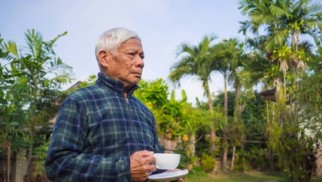

Parkinson's disease (PD) is one of the most mysterious neurological pathologies. Despite the tremendous qualitative leap made by medicine in the 21st century, it has not been possible to establish the cause of the disease or learn how to cure it. Nevertheless, some recent studies are cautiously optimistic.
Short information about Parkinson’s disease treatment and prophylaxis
Standard drug therapy
PD still remains an incurable disease, preventing or stopping the pathological process is impossible. Therefore, all the available treatments are aimed at mitigating the effects of neurodegeneration.
Most of the drugs developed to date for PD act on the dopamine system to relieve motor symptoms that cause patients to seek medical attention.
Since its introduction in the 1960s, the gold standard for treating such symptoms has been Levodopa, a dopamine precursor. Unfortunately, with prolonged (5-10 years) use and in patients with early onset of PD, a decrease in its effectiveness and disabling motor complications are noted. Since then, a number of new drugs have been developed that provide moderate control of motor symptoms with a reduced frequency of motor complications. Thus, most of the current guidelines recommend prescribing these drugs in the early stages of the disease. However, with the progression of PD to a late stage, Levodopa must be added as the most effective agent for sufficient control of motor symptoms. Treatment of the disease at this stage usually includes the appointment of Levodopa in combination with other medicines.
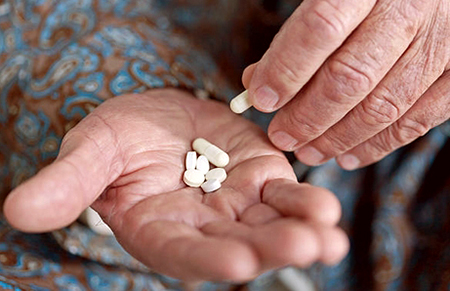
- Levodopa. Levodopa, or L-DOPA, is a precursor to the neurotransmitter dopamine. In contrast to the latter, it crosses the blood-brain barrier, making it an ideal remedy for dopamine deficiency in PD. However, the conversion of Levodopa to dopamine also occurs in peripheral tissues even before the drug reaches the site of action. Therefore, Levodopa is usually prescribed in combination with inhibitors of DOPA decarboxylase (IDDC) in order to avoid its premature metabolism. Levodopa is not recommended as a first-line therapy in the early stages of PD, except in cases of initially severe motor manifestations and some other special cases. This drug in combination with IDDC is usually used in advanced stages of PD. The most common side effects of this treatment are motor complications. When these complications become severe and disabling, other drugs may be used to control them.
- Dopa decarboxylase inhibitors (IDDC). IDDCs inhibit the action of aromatic L-amino acid decarboxylase, an enzyme that provides dopamine synthesis from L-DOPA. IDDCs do not penetrate the blood-brain barrier; therefore, L-DOPA metabolism is inhibited by them only in peripheral tissues. IDDCs are prescribed together with Levodopa, which allows reducing its dose. These drugs themselves are not associated with the development of any side effects.
- Catecholortomethyltransferase Inhibitors (ICOMT). ICOMT inhibit the action of catecholortomethyltransferase, an enzyme that utilizes a number of neurotransmitters, including dopamine. ICOMT is always prescribed in combination with Levodopa/IDDC to extend their half-life. Since these drugs effectively eliminate the motor complications of Levodopa therapy, they are recommended as an adjunct to it in the late stages of PD. Side effects include dark-colored urine and increased unwanted effects of Levodopa.
- Dopamine receptor agonists (ADRs). ADRs are relatively small molecules that directly activate dopamine receptors, compensating for the low level of this mediator in PD. According to their chemical structure, they are divided into two groups: ergoline and non-ergoline compounds. Ergoline ADRs (ergot derivatives) were the first to be developed and have a broad receptor profile leading to a large number of significant adverse effects. Non-ergoline compounds (Uprima) developed later are more selective and cause fewer side effects. ADRs provide moderate control of motor symptoms with a low frequency of motor complications. In the early stages of PD, the response to these drugs as monotherapy can be quite satisfactory. Therefore, ADRs are recommended as first-line therapy at the onset of the disease and as an adjunctive therapy to Levodopa in advanced stages. Side effects include nausea, edema, orthostatic hypotension, drowsiness, impulse control disorders, and hallucinations.
- Monoamine oxidase inhibitors-B (MAOIs-B). MAOIs-B inhibit the action of the monoamine oxidase family of type B enzymes, which are responsible for the breakdown of dopamine. According to most guidelines, the improvement in motor symptoms with these drugs is moderate or limited, although they can sometimes be used as monotherapy at the onset of the disease and as adjunctive therapy to Levodopa/IDDC in the later stages of PD. Side effects of MAOI-B may include headache, depression, psychostimulation, confusion, and increased unwanted effects of Levodopa.
- Amantadine. Amantadine is a "retrained" antiviral drug, an antagonist of glutamate NMDA receptors. It has proven itself as a means of early therapy for PD with a predominance of rigidity, hypo- and akinesia, and therefore it is included in the standards of PD treatment.
- Holinoblockers. Anticholinergics are small molecules that suppress acetylcholine impulse. Historically, they were the first drugs to treat PD. To adequately assess the effectiveness of anticholinergics at any stage of PD, insufficient studies have been conducted; in practice, they are most often prescribed only if there is a pronounced tremor in patients of a relatively young age.
Non-drug Parkinson’s disease treatment methods
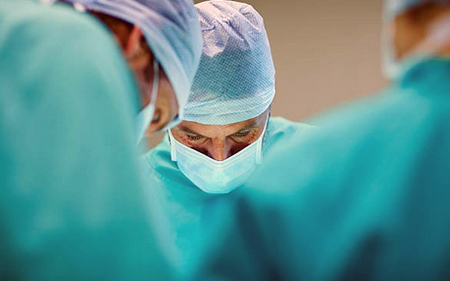
- Surgery. Since the 50s of the 20th century, surgery has also been used in the treatment of Parkinson's disease. At the same time, the techniques of neurosurgeons have undergone significant changes. Initially, operations were aimed at destroying the pathways in the thalamus. Alas, the result of such operations was often unsatisfactory and they caused a lot of side effects.
A more progressive method is neuroprosthetics (neuroimplantation) or the installation of neurostimulators. A person is given special implants. They activate nerve cells in the brain, improve the brain's ability to process information, and control movements.
After surgery, further medication supportive care may be required, but the number of drugs required by the patient is significantly reduced. Immediately after the operation, tremors are significantly reduced, balance and the ability to concentrate are improved.
Treatment with folk remedies
With Parkinson's disease, many folk remedies are used:
- Juice therapy (from fresh vegetables, fruits).
- Oils (externally).
- Baths of herbal decoctions (oregano, jasmine).
- Use of bee products (especially propolis).
- Drinking of infusions and decoctions based on lemon balm, eleutherococcus, ginseng.
Important! Folk remedies are not a basic treatment. It is in addition to the main drug therapy.
Juice therapy is a good general tonic. Massage with jasmine oil, sage baths relieve tremors, and oregano - relieve muscle tension. Decoctions and tinctures have good tonic ad energizing properties.
But by themselves, folk remedies do not give an effect. They can only be considered as part of a comprehensive treatment.
Nutrition and diet

A proper diet helps to maintain the necessary balance, to consolidate the effect of medication and/or neurosurgical treatment.
A special diet for Parkinson's disease is not required, but the diet of a person who suffers from Parkinson's disease must include fermented milk products, grains, herbs, vegetables, fruits, and cereals. They should be the main part of the diet.
At the same time, one should not forget about fish and poultry meat. Animal protein is essential. Vegetarianism is not recommended for Parkinson's disease. At the same time, doctors (due to the specifics of the disease) recommend leaving meat dishes for dinner.
The food intake schedule should be clearly coordinated with the medication schedule. Many medicines prescribed for Parkinson's disease can only be taken two hours after a meal.
It is also important to observe the drinking regime - at least 7 glasses of water a day. In this case, a third of the water you drink should come from meals.
Physiotherapy
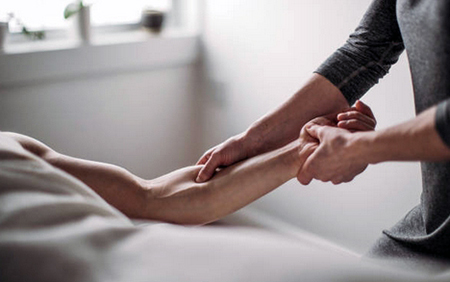
Remedial gymnastics is also an important element in the fight against Parkinson's disease. It is useful for maintaining muscle tone, developing joints, improving coordination of movements, and strengthening ligaments.
Exercises for the shoulder girdle, neck muscles, torso, arms, legs are especially useful:
- Tilts, turns of the head to the right and to the left (the main principle is that exercises are performed very slowly);
- Lifting, raising the shoulders;
- Circular movements in the shoulder joints;
- Straightening the legs at the knees (alternately);
- Flexion of toes, hands;
- Straightening and stretching of the back.
Facial gymnastics is also beneficial. Doctors recommend that patients start every day with these exercises:
- Extend your tongue and move it in different directions.
- Raise and lower your eyebrows.
- Purse your lips.
At first glance, the exercises are simple but they are effective. If exercise is done regularly, then a number of symptoms, especially those affecting muscles and joints, are much less disturbing.
In addition to classical exercise therapy, it is useful to dance with Parkinson's disease. Argentine tango provides a particularly good effect. Indeed, when performing this dance, different muscle groups and joints are maximally involved. With a strong progression of the disease, this method of fighting the disease is difficult to use, but at the 1st and 2nd stages of the disease, its use is very advisable.
Forecast
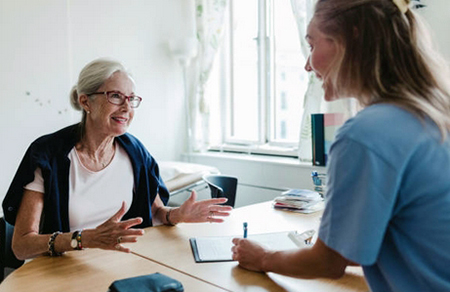
The prognosis for Parkinson's disease is unique for each person. The main difficulty is that it is impossible to predict what symptoms will appear and when.
But the patient himself can significantly slow down the course of the disease. This requires a clear treatment plan and a positive outlook. Reducing stress significantly improves every symptom when the desire to get well activates the body and increases the chances of recovery.
Also, the prognosis is extremely different for those patients who are treated with purely folk remedies, and those who are undergoing medical, neurosurgical treatment, are engaged in physiotherapy exercises under the supervision of a physician. But the most favorable prognosis is for those who not only struggle with symptoms, are engaged in maintaining the preserved skills, but also learn new things. It can be both new movements and intellectual processes (learning foreign languages, drawing).
An integrated approach to treatment, rehabilitation allows a person not only not to avoid disability but to live a full life.
Prevention is also very important. These are not just measures to prevent the disease, but the exclusion of a number of risk factors from your life.
To prevent Parkinson's disease, doctors recommend:
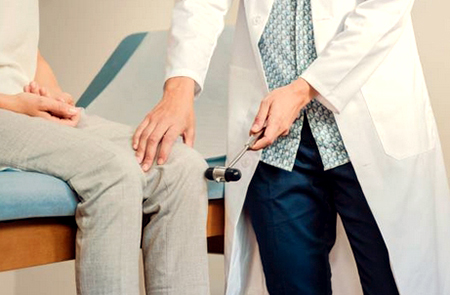
- Regularly undergo general medical examinations, at the first signs of problems with the nervous system, immediately contact a neurologist.
- Avoid sports in which you can get a head injury (hand-to-hand combat, alpine skiing, boxing), but watch your physical condition. It is advisable to go jogging, swimming, walking, yoga.
- Optimize your diet.
- Control the level of hormones (this is especially important for women).
- Monitor your sleep quality. You need to sleep at least 7 hours.
- Engage in creativity that enhances fine motor skills, such as crocheting, embroidering.
- Solve crosswords, puzzles.
Timely started prophylaxis helps reduce the likelihood of getting sick. You need to be especially careful and attentive if you have relatives with Parkinson’s disease.
Post by: Kylie Richardson, General Practitioner, Rotterdam, Netherlands
(Updated at Apr 15 / 2024)
Uprima articles:
Some of the trademarks used in this Web Site appear for identification purposes only.
All orders are reviewed by a licensed physician and pharmacist before being dispensed and shipped.
The statements contained herein are not intended to diagnose, treat, cure or prevent disease. The statements are for informational purposes only and is it not meant to replace the services or recommendations of a physician or qualified health care practitioner. If you have questions about the drugs you are taking, check with your doctor, nurse, or pharmacist.